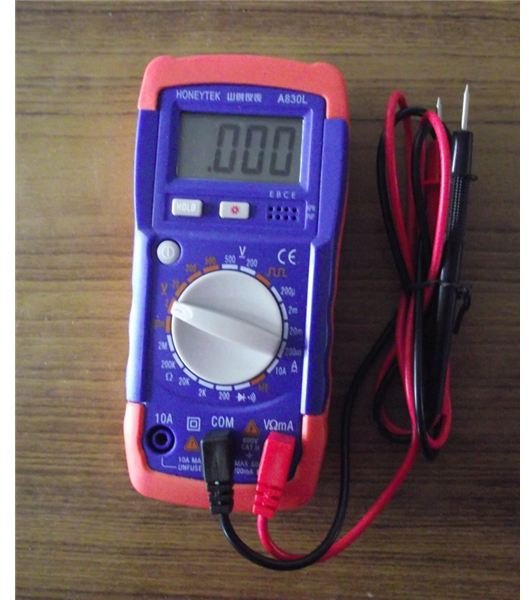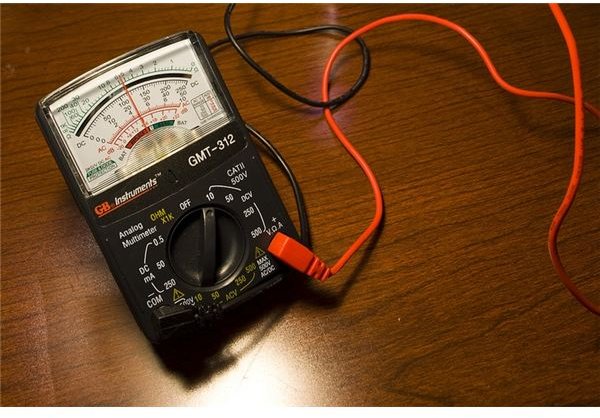Advantages and Disadvantages of Digital Meters
Digital Multimeter
A digital multimeter is a device which provides combined functionality of ammeter, voltmeter and ohmmeter. It is commonly known as DMM. It is most widely used due to its small size, price and ease in operation. A digital multimeter has an analog/digital converter that provides a digital readout. This increases the precision in reading the values.
Analog and Digital Multimeters

Advantages of Digital Multimeters
First, we will discuss the pros or advantages of digital multimeters.
- They are more accurate than analog multimeters.
- They reduce reading and interpolation errors.
- The ‘auto-polarity’ function can prevent problems from connecting the meter to a test circuit with the wrong polarity.
- Parallax errors are eliminated. If the pointer of an analog multimeter is viewed from a different angle, you will see a different value. This is parallax error. A digital multimeter’s numerical display solves this problem
- Digital multimeter displays have no moving parts. This makes them free from wear and shock failures.
- The reading speed is increased as it is easier to read.
- Unlike analog multimeters, zero adjustment is not required.
- Digital output is suitable for further processing or recording and can be useful in a rapidly increasing range of computer controlled applications.
- With the advent of Integrated circuits, the size, cost and power requirements of digital multimeters has been drastically reduced.
- Accuracy is increased due to digital readout. You can make mistake in reading the scale in analog multimeter, but digital multimeters have a LCD display to show accurate reading.
- DMMs can be used in testing continuity, capacitors, diodes and transistors. More advanced digital multimeters can also measure frequency.
- The ‘auto-ranging’ feature of a digital multimeter helps in selecting different measurement ranges, which can prevent damage to the meter if the wrong range is selected.
- Portable size makes it easy to carry anywhere.
- They cause less meter loading effects on the circuits being tested.
- Some advanced digital multimeters have microprocessors and can store the readings for further processing.
- They have very high input impedance.
Disadvantages of Digital Multimeters
- The LCD display depends on a battery or external power source. When the battery is low, the display will be dim, making it difficult to read.
- In case of fluctuations or transients, it can record an error.
- Warming of the meter during its use can change its properties leading to errors in measured value.
- The A/D converter has a limitation on word length which can cause quantization noise giving rise to error in measured value.
- There is a voltage limitation. If it is increased beyond the limit, the meter will be damaged.
- The digital nature makes it unsuitable for adjusting tuning circuits or peaking tunable responses.
- They are expensive due to high manufacturing cost.
In spite of above mentioned disadvantages, the digital multimeters are gaining popularity and are most widely used.
Image Credits and References
Image Credits:
Analog Multimeter: https://www.flickr.com/photos/33852688@N08/4267510655/
Digital Multimeter: Created by author.
References:
https://www.mit.tut.fi/MIT-1016/multimeter.pdf
https://www.thetestequipment.com/articles/multimeter.html
Measurement and Instrumentation Principles by Alan S Morris
Basic Electronics and Linear Circuits by N.N.Bhargava and D.C.Kulshreshtha
Foundations of Electronics, Circuits and Devices by Russell L. Meade, Robert Diffenderfer
